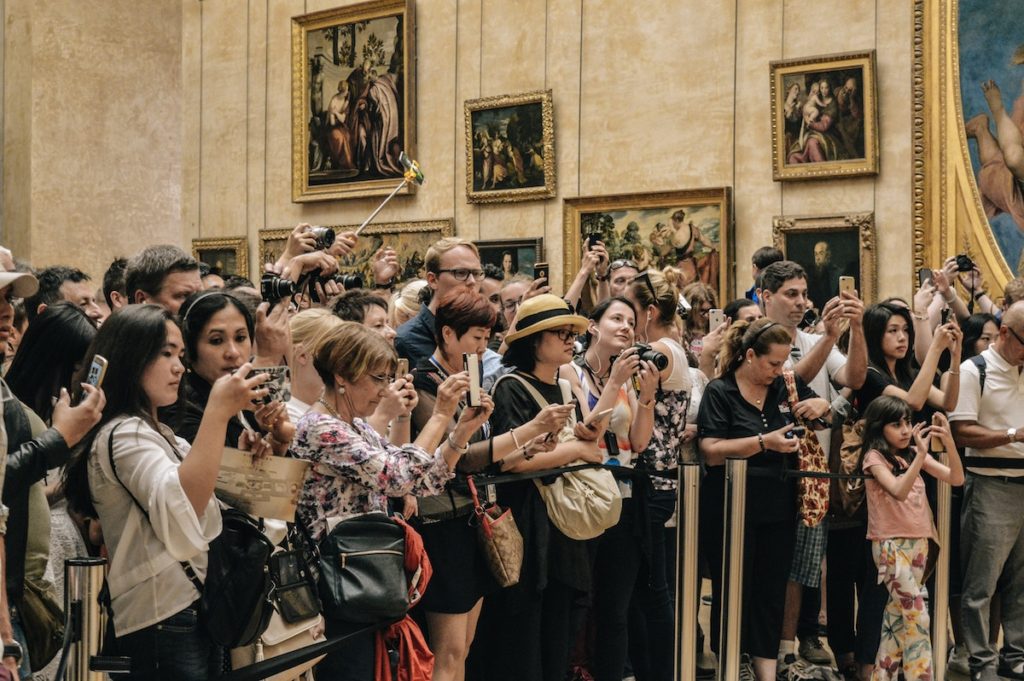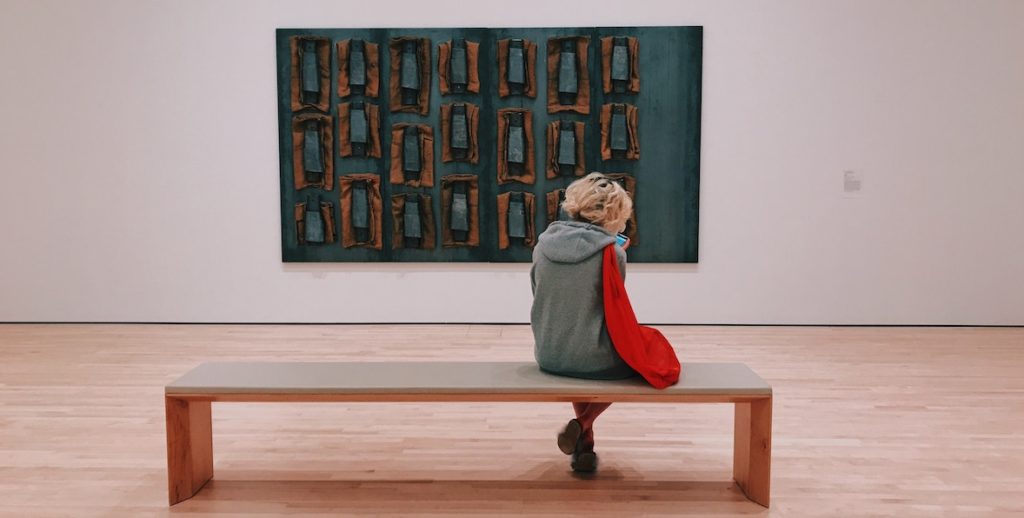
“When you go to the library,” said James O. Pawelski, the director of education for the Positive Psychology Center at the University of Pennsylvania, “you don’t walk along the shelves looking at the spines of the books and on your way out tweet to your friends, ‘I read 100 books today!’” Yet that’s essentially how many people experience a museum. “They see as much of art as you see spines on books,” said Professor Pawelski, who studies connections between positive psychology and the humanities. “You can’t really see a painting as you’re walking by it.”
from “The Art of Slowing Down in a Museum”, The New York Times, October 9, 2014
Last weekend I facilitated a Slow Art Day event at the SFMOMA Gallery at Ft. Mason, a beautiful setting on the waterfront. Phil Terry started the annual Slow Art Day event to help people practice the art of seeing and connect more deeply with art and the artist. The first official Slow Art Day was in 2010. This year 152 museums and galleries around the world participated in the event on April 6.
Several studies over the last several years have shown that the average museum goer spends 15 to 30 seconds viewing a work of art.
At the gallery, about 35 of us came together to take our time viewing five pieces of art and sharing our experiences with each other. Michelle Nye, our gallery host, had selected 5 artists for the event: Apexer, Deladier Almedia, Devid Becker, Robert Larson, and Emma Webster. After a brief introduction, in groups of 7, we took seats that were arranged in front of each piece of art. Michelle sounded a chime to begin and we focused on one piece for 10 minutes. Michelle sounded the chime to move to the next piece after the 10 minutes were up.
When everyone started, I’m pretty certain that we were all thinking 10 minutes was an impossible eternity to look at one piece of art. But afterwards, many of us shared how quickly the 10 minutes passed and how surprised we were by what we noticed, especially with pieces we weren’t especially attracted to.
I had deep experiences with each piece. But my interaction with one piece of art really got my attention. Pilgrims by Deladier Almedia was the art featured in the promotional flyer for the event so I looked at it a lot in digital form as a jpeg when I was preparing for the day. I actually thought I knew what was going on. But when I saw the full size original (54 x 72 inches), I was stunned by what I saw. Viewing the small jpeg, my mind had leapt to assumptions. But I hadn’t even started to see what the artist had actually painted. Wow.
50 minutes later we put our chairs in a big circle, and started to talk about the experience. So the Slow Art experience is not just about slow viewing, it’s about sharing the experience with others. Several people talked about how much they appreciated the shared aspect of the event—viewing art in this intentional way with other people. Two of the artists attended so we were able to ask them questions about what they’d painted which deepened the conversation even more.
I was struck by the absence of phones. The only 2 phones were Michelle’s (she used the chime on the Insight Timer app to signal the start and end of each 10-minute session), and mine (I had the discussion questions in Evernote and referred to them a few times). We hadn’t said anything about phones, but no one had theirs in hand—no photos, no texts, no notifications. That was striking.
How are you practicing and modeling the art of seeing? The article “The Art of Slowing Down in a Museum” by Stephanie Rosenbloom has some excellent suggestions for curating your own slow art experiences at your local museums.

A few Slow Links
What I am listening to: Education thought leader Jordan Shapiro on Screens, Kids, and his new book “The New Childhood” on The TiLT podcast with host Debbie Reber
What I’m reading: Slow down, read up: Why slow journalism and finishable news is (quickly) growing a following by Benjamin Bathke, NiemanLab


